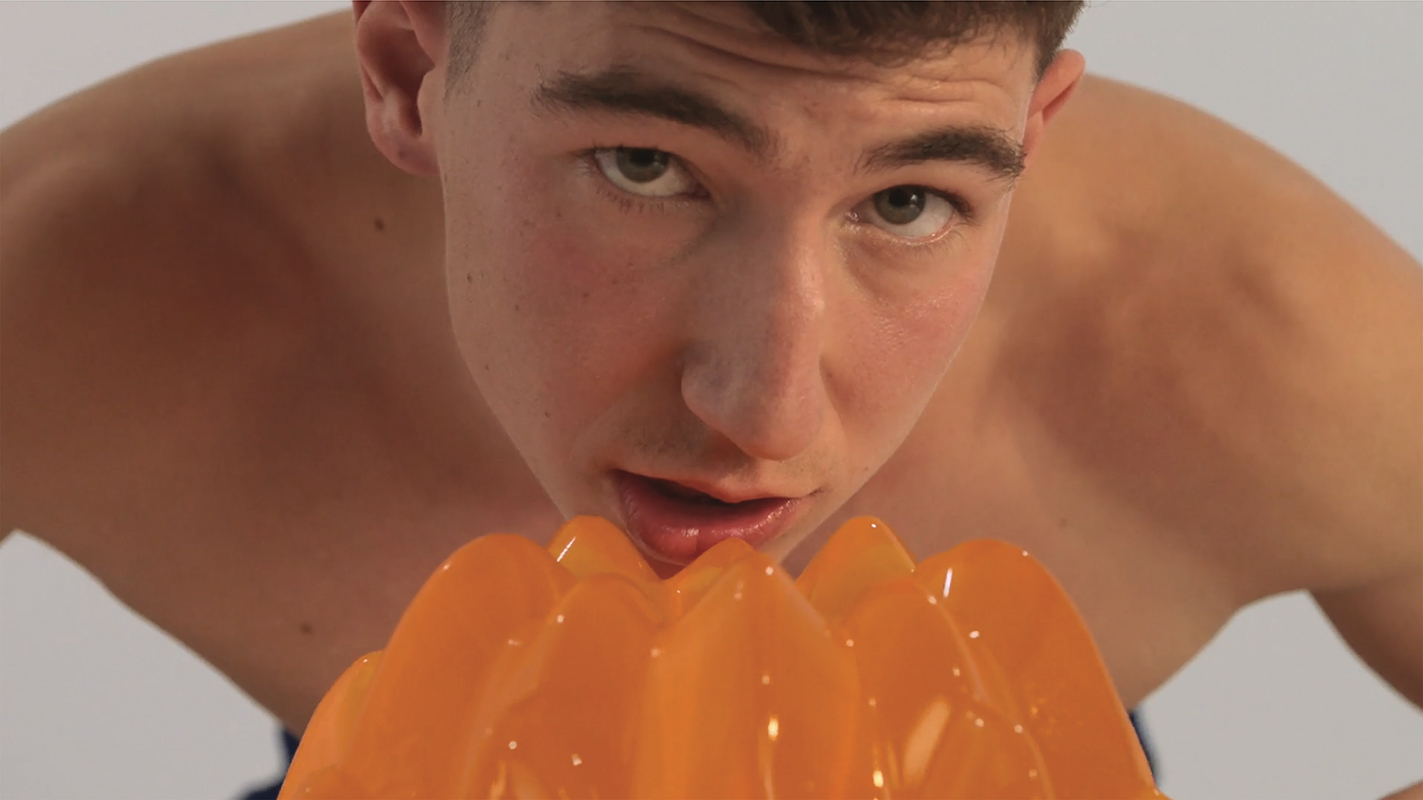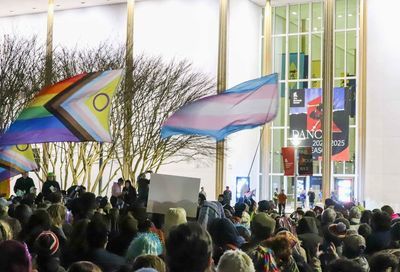Chemical Warfare
The DEA Wants to Crash Your Favorite Party

At the security checkpoint, a man in a windbreaker asks you to remove your jacket, your shoes and your hat. You lift your arms parallel to the floor and he frisks just about every inch of your body. Your hair is searched. He checks your piercings. You lift up your tongue so he can look underneath with a flashlight. You think, “So this is how produce feels. ” You pass the inspection, minus one Chapstick.
This is not the scene at Reagan National on a “heightened state of alert ” day. This is a party, and you’re in the pre-party phase. Up against the wall and spread ’em. And try to relax.
It’s a scene partygoers have become familiar with. Searches, pat-downs, and confiscations of “paraphernalia ” have become SOP at many venues, courtesy of the War on Drugs. And the pressure put on promoters to keep their events substance-free is about to ratchet up a notch, as congress ponders the controversial Reducing Americans’ Vulnerability to Ecstasy Act, adorably nicknamed the RAVE Act.
The act threatens lengthy prison terms for party promoters whose patrons are caught using drugs. Advocates argue that the RAVE Act will ease what they see as an epidemic of ecstasy abuse. Opponents say the act is aimed at intimidating promoters, coercing them into not throwing parties at all. And smaller venues point out that the act could be used by authorities to shut down bars and clubs of any type, not just raves — a fact that has galvanized promoters of gay bars and parties across the country.
Cracked Out
On a federal level, the hostility toward rave-style parties and their promoters has been building steadily. The Ecstasy Prevention Act, which passed through Congress last December, gives states financial incentives for passing ordinances restricting rave clubs and seizing land used for raves via nuisance laws.
But the RAVE Act is widely considered to be the government’s most aggressive front so far toward club drugs and the party scene in general. That act expands the 1986 “crackhouse laws ” to target promoters who “knowingly and intentionally ” throw a party where drugs are present. The promoter, if convicted, can face exorbitant fines and up to twenty years in prison.
The crackhouse laws have been used in the past in attempts to shut down licensed parties, the most famous case being the federal government’s investigation of the State Palace Theatre in New Orleans, site of a monthly rave that was infiltrated by the U.S. Drug Enforcement Agency in January of 2000. Undercover agents observed the use of glowsticks, pacifiers, massage tables, bottled water and an air conditioned “chill room. ” The DEA decided that these accessories were tantamount to drug paraphernalia, and the party’s promoters were arrested.
|
The trial ended in a plea bargain. Barbecue of New Orleans, Inc., the company that had leased the theatre for the party, was fined $100,000, and the judge ordered that “rave toys, ” be banned from the building. Also, any room kept fifteen degrees cooler than the rest of the theatre was prohibited. U.S. Attorney Jim Letten called the plea “an immediate, tangible and long-lasting benefit to the welfare of local youth and the community as a whole. ”
But Letten’s victory dance was a tad presumptuous. According to Rolling Stone, which ran the story under the headline “DEA Rave Bust Goes Bust, ” all charges against the promoters were dropped, the theatre continues to hold raves to this day, not one actual drug bust was made and, two months later, a judge ruled that the banning of rave toys violates the First Amendment.
“The government cannot keep legal items out of places because of illegal activities they associate with those items, ” ruled Judge Thomas Porteous.
The DEA walked away with egg on its face, but that didn’t stop them from trying again. In May of 2001, Club La Vela, the famous Panama City Beach site of MTV’s Spring Break, was hauled into court under the crackhouse statute as well. Prosecutors presented the courtroom with Blow Pops and glowsticks as evidence of drug use in the club. It took the jury less than two hours to decide that Blow Pops are candy, not drug paraphernalia.
The government knew something had to be done. Arrests were being made but no one was doing any time. The dead busts were becoming a running joke and November elections were right around the corner. The DEA needed a loophole — a way to make party promoters guilty by association.
Just Say Joe
Enter Senator Joe Biden, Democrat from Delaware and preeminent crusader in the War on Drugs. Currently, he serves as chair of both the Judiciary Subcommittee on Crime and Drugs and the International Narcotics Control Caucus. He authored the law that established the nation’s drug czar. In 1996, during a debate with Orrin Hatch, he insisted that “I’m the guy that suggested in the first national drug strategy that we get the military involved. ” He was a narc’s wet dream.
Biden put together the bill called the RAVE Act. It cleared the Senate Judiciary Committee last June with “congressional findings ” that, according to the Washington Post, declare bottled water, chill rooms and glowsticks to be drug paraphernalia. It also retains the crackhouse law sentencing guidelines: party organizers whose patrons get busted with drugs can face fines in the millions and up to twenty years in federal prison.
“The bill tailors the crack house statute to address rave promoters’ actions more specifically so that Federal prosecutors will be able to use it to prosecute individuals who allow rampant drug use at their events and seek to profit from putting kids at risk, ” Biden said when he introduced the bill on June 18.
In an inexplicable bout of concern for the economic injustice of it all, Biden went on to chastise party organizers for charging “five to ten dollars ” for bottled water.
Senator Charles Grassley (R-IA), lead cosponsor of the bill, played the roll of Good Cop by promising in his own speech that “this legislation will not eliminate all raves ” and that “innocent owners and proprietors will remain exempt from prosecution. ”
But critics of the bill have pointed out that its language leaves “innocent ” wide open to interpretation. Mark Lee, promoter and manager of Lizard Lounge and Atlas, insists that “we are all liable under this act. ”
“Every type of event, venue and community fundraising event is going to be liable under targeted and selected prosecution, ” says Lee. “Senator Biden wants to suggest that [the RAVE Act] is limited to a certain type of event, but there is nothing in the bill that indicates that. It’s left in the hands of local prosecutors across the country to determine who they’re going to target. ”
The bill makes it a crime to “knowingly and intentionally ” provide a space where drug use is occurring. But “knowingly and intentionally ” is as specific as it gets, and because the bill specifies that glowsticks, massage oils, mentholated inhalers and chill rooms “enhance the effects of the drugs that patrons have ingested, ” prosecutors could argue that anyone throwing a party where these items are present knew about the presence of drugs. The promoters of the parties in New Orleans would have been easier to convict. Ditto the promoters of Nation’s recently-defunct party, Buzz, which suffered eight drug busts on September 13.
Ironically, the same day that those busts occurred, Senator Patrick Leahy (D-VT) was withdrawing his co-sponsorship of the RAVE Act. His reasons closely mirrored the concerns of promoters and party organizers — that the bill’s scope is too broad.
“A more narrowly crafted bill to target only unscrupulous promoters who are purposely holding events in order to profit from the illegal distribution of Ecstasy and other illegal drugs to young people would be preferable, ” he said in a statement.
Senator Biden’s office dismisses such concerns.
“The vast majority of people promoting events out there will have nothing to fear from this bill, ” says Biden’s Deputy Press Secretary Chip Unruh. “We don’t think that the prosecution will be able to use our law willy-nilly to go after whoever they want. ”
Safety in Numbers
Inspiration for the bill came from a series of hearings on both the club drug phenomenon and on raves. Unruh says the legislation is aimed at combating Ecstasy use “where it was taking place most often, and that happens to be at raves. ”
Minutes later, however, he appears to downplay the rave angle, insisting that “Senator Biden is not against electronic music ” and that the bill’s rave-specific name is incidental.
|
“Here in Washington, people like to crystallize things into little catchphrases, ” Unruh says.
But Graham Boyd, Director of the Drug Policy Litigation Program at the American Civil Liberties Union, doesn’t buy that defense.
“Freedom of speech covers music of any sort, ” says Boyd. “This bill selectively targets a particular kind of speech…that the government apparently doesn’t like. It becomes a tool for censorship. ”
Regardless, many expect the RAVE Act to cruise into law with little resistance. It contains the two sacred cows that legislators dare not desecrate: a heartfelt promise to Save The Children, and a steadfast commitment to Just Say No.
“For United States senators to come out against drug use by adolescents is the gold standard in politics these days, ” says Mark Lee.
The problem with that, according to many promoters, is that shutting down parties may have just the opposite effect. The scene will go underground into basements, parks and abandoned buildings, and the kids will follow.
“It’s sad when every year we hear about a dozen or so deaths due to Ecstasy, ” says Amanda Huie, director of PR and marketing for Buzzlife Productions, which produced the Friday night Buzz party at Nation. “But the thought of two thousand people at a party at an underground warehouse with no air conditioning, no fire escapes, no sprinkler systems — that terrifies me. This bill creates way more problems than it solves. ”
Even legal parties may decide to cut back on safety measures. Some fear that under the RAVE Act, so much as an ambulance kept on-site at a party could be used by prosecutors to insinuate that the promoter knew there were drugs present. Less medical personnel could equal less liability, and patrons’ increased risk could mean the promoter’s increased safety. Organizations like Dancesafe and the Responsible Party Movement, which provide information on drug use at raves, will effectively be banned from operating.
“The bill will prevent outreach programs that try to inform the public on the risks of drug use from getting into the venue, ” says Dancesafe Executive Director Tim Santamour.
The irony is that the federal government’s own research has found that “mentions of club drugs are truly rare events ” in emergency room visits, especially when compared to mentions of cocaine and alcohol-in-combination mentions.
The Drug Abuse Warning Network (DAWN), a program under the federal government’s Department of Health and Human Services, found that only about 555,000 emergency room visits (out of 91 million total) were drug-related, and that of these drug-related cases, only about 1,665 involved Ecstasy or GHB.
In addition, the DAWN report found only 27 deaths involving MDMA between 1994 and 1999. The research team conceded that “Due to the small number of deaths attributed to club drugs, no further analyses of these data were performed. ”
“Under ordinary circumstances, we would not report numbers this small, ” the team concluded. “They are reported here for two purposes: first, to calm speculation and second, to correct recent media errors related to these data. ”
A report by media watchdog group Fairness and Accuracy in Reporting (FAIR) alleges that the news media intentionally skew their findings for the sake of sensationalism and drama. For example, when newsmagazine program 60 Minutes II cited DAWN statistics that attributed 1,100 hospital cases to Ecstasy abuse in the past few years, the program neglected to provide any proportional reference point — for instance, that the same DAWN report showed Tylenol overdoses to be responsible for 20,000 hospital cases in 1998 alone.
Regardless, Unruh says that Biden decided to author the RAVE Act “because of what he was hearing from experts. ” The one group he mentioned specifically was the Partnership for a Drug Free America.
Unlike DAWN, a federal research organization dedicated to collecting data — not advancing an interest — the Partnership for a Drug Free America is a group with a self-proclaimed mission: to “help kids and teens reject substance abuse by influencing attitudes through persuasive information. ” The Partnership is not made up of health professionals — it is a coalition of media, marketing and PR firms that can construct catchy ad campaigns. You may remember them from the 1980s, when they showed you Your Brain On Drugs.
Unruh says that Biden used this group’s data when authoring the RAVE Act, citing their finding that “in the past three or four years, Ecstasy use has increased by over 71 percent. ”
That 71 percent increase sounds big. But it’s not as big as you might think. Seven percent of teens reported trying Ecstasy in 1999, and in 2001 twelve percent of teens reported trying the drug. That five percent overall increase from 1999 to 2001 is, statistically, a 71 percent increase of the initial seven percent of teens reporting trying ecstasy.
“What you’re looking at with the RAVE Act is something that’s trying to return the rave community to what it said it wanted in the first place: peace, love, unity and respect, ” says Howard Simon, assistant director of PR for the Partnership for a Drug Free America. “This is for people who want the music, want the dancing, want the community, and can hopefully have that in a drug-free atmosphere. ”
Simon’s extremely diplomatic assertion reflects most pro-RAVE Act arguments: Drugs, not raves, are the enemy. The bill’s advocates repeat this like a charmed incantation designed to ward off the ACLU. But however questionable the sincerity of middle-aged senators who claim to care about preserving rave culture, it’s this appeal to civil liberties activists that makes the bill seem constitutional. It’s also the reason why the RAVE Act will never work.
Proponents of the RAVE Act are, for the most part, not ravers. What they know of raves comes largely from studies and reports. So it’s plausible that they could assume that extracting drugs from the rave scene is like slicing a bruised spot out of an apple. Ravers are always insisting that their scene is not all about drug use, so why can’t it sally forth without its little pills?
The reason is that drugs are not a tidily packaged chunk that can be sliced out of the apple. They’re more like the juice — just one of the apple’s many components, but a component that can’t be removed without crushing the whole thing. Removing drugs from raves, and from American nightlife in general, is not possible — not without a total revolution in the way people view their nocturnal social scene, and certainly not with a bill so stark and simplistic as the RAVE Act.
How has this obvious fact escaped advocates of the bill? It’s tempting to suggest that it hasn’t, that the RAVE Act’s fans know exactly what such legislation would do to the nightlife scene, and that frankly, they don’t care. This isn’t the first time that the hawks in the War on Drugs have expected America’s parties to sacrifice for their cause.
And because the RAVE Act is basically the War on Drugs brought down to a more focused level, it will fail in its goals just like the War on Drugs has, but in a more focused way. There are a few potential scenarios if the bill passes. One is that party promoters will be intimidated enough by the threat of prison to stop holding events. Another is that the law won’t be enforced, instead becoming another unnoticed footnote collecting dust in a law book. A third is that the law will be used the way Biden’s office says is intended — that DEA will exercise restraint and use the bill to prosecute only the most egregious promoters.
“And there’s no evidence that they’ve ever done that, ” warns Graham Boyd.
Though many originally expected the RAVE Act to sail through congress unopposed, its opponents have managed to whip up enough controversy to perhaps stall the bill until next year. Bill Piper, Associate Director of National Affairs for the Drug Policy Alliance, believes that activists have garnered enough opposition to the bill to raise a few eyebrows about its viability.
“When it was first introduced, everyone thought it was a slam dunk, ” says Piper. “But now you have a coalition of groups that have come out against the bill. Proponents probably aren’t going to be able to bring it up as quickly in the Senate. ”
Many party organizers are also moving forward with plans, despite the act’s outcome. Peter Hahn, chairman of the Cherry Fund, says that D.C.’s annual circuit party, Cherry, is still in the works.
“With or without the RAVE Act, we’ve never tolerated drugs at Cherry. We think the community stands behind us. We’re not intimidated. ”
Piper believes that if the bill does not go to a vote before congress recesses in October, Biden will try to get it through early next year. Either way, he too believes that the act will do little to curb Ecstasy use.
“It’s like you’re turning business owners into law enforcement officers. That’s the job of the police. Promoters can’t stop drug use any more effectively than the D.C. Police Department can, so why not go after the police for allowing drug use to happen? Or prisons? Or public schools? They all have patrons who use drugs too. ”
|
Also see last week’s story about Buzz closing at Nation. |
 |
Support Metro Weekly’s Journalism
These are challenging times for news organizations. And yet it’s crucial we stay active and provide vital resources and information to both our local readers and the world. So won’t you please take a moment and consider supporting Metro Weekly with a membership? For as little as $5 a month, you can help ensure Metro Weekly magazine and MetroWeekly.com remain free, viable resources as we provide the best, most diverse, culturally-resonant LGBTQ coverage in both the D.C. region and around the world. Memberships come with exclusive perks and discounts, your own personal digital delivery of each week’s magazine (and an archive), access to our Member's Lounge when it launches this fall, and exclusive members-only items like Metro Weekly Membership Mugs and Tote Bags! Check out all our membership levels here and please join us today!























